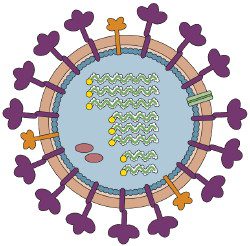Influenza A And B Virus

Types a and b are similar but influenza b can only.
Influenza a and b virus. Prevalence according to researchers influenza a viruses are responsible for about 75 of confirmed flu cases while influenza b viruses. Symptoms can be mild to severe. The most common symptoms include. Influenza commonly known as the flu is a respiratory infection caused by flu viruses.
Influenza virus is typically associated with infections of the upper respiratory tract and can cause mild to severe illness with symptoms including abrupt onset of fever malaise severe myalgia and a nonproductive cough. Influenza a b c and d. A b and c. Type b flu may cause a less severe reaction than type a flu virus but occasionally type b flu can still be extremely harmful.
Influenza a b c and d. 9 so any influenza virus that is described as h n such as h1n1 is an influenza a virus. The virus mutates frequently but the strains are classified into one of three categories a b or c. High fever runny nose sore throat muscle and joint pain headache coughing and feeling tired.
Influenza a and b differ in terms of how common they are. Influenza a is the group that most commonly causes illness in humans. Unlike type a flu viruses type b flu is found only in humans. There are three main types of influenza.
Influenza commonly known as the flu is an infectious disease caused by an influenza virus. A minor viral envelope protein is cm2 which functions as an ion channel. Influenza b virus is only known to infect humans and seals. There are two known circulating lineages of influenza b virus based on the antigenic.
There are four types of influenza virus. Influenza virus and respiratory syncytial virus rsv infect millions of individuals annually. Types a and b are responsible for the flu epidemics that occur in the united states most winters. There are actually four different types of influenza viruses.
This limited host range is apparently responsible for the lack of associated influenza pandemics in contrast with those caused by the morphologically similar influenza a virus as both mutate by both antigenic drift and reassortment. The m1 protein lies just below the membrane as in influenza a and b virions. Like the influenza a and b viruses the core of influenza c viruses consists of a ribonucleoprotein made up of viral rna and four proteins. Influenza a and b are the two types of influenza that cause epidemic seasonal infections nearly every year.
These symptoms typically begin two days after exposure to the virus and most last less than a week.



/770484-article-img-influenza1-5a28469f482c520037628e11.png)




/H1N1_virus-56a09b633df78cafdaa32fa0.jpg)









